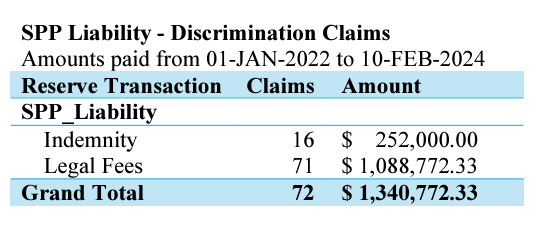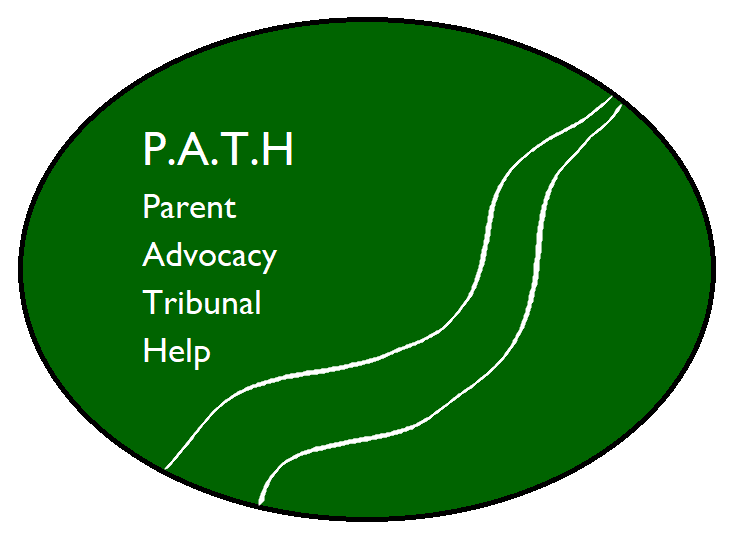We have another fabulous decision from the Human Rights Tribunal.
Child K (by Ehmke) and another v. Queen of All Saints School and another
The topics under this decision include:
- Anonymization attempt by the respondents
- Dismissal attempt – Due to TRB decisions
The parent, Lee Ehmke who has fought with legal representation has won to be named. She is in a legal battle with the Queen of All Saints School within the Catholic Independent Schools of Vancouver Archdiocese.
Since she’s working so hard to name these people, let me say it one more time. She is in a human rights battle with the Queen of All Saints School within the Catholic Independent Schools of Vancouver Archdiocese.
This battle has already gone to the BC Supreme Court when the respondents had a failed attempt through a judicial review to remove her from being the FIRST parent attached under Family Status with her daughter’s human rights complaint. You can read that lovely decision here. Independent School Authority v Parents, 2022 BCSC 570.
Thanks Lee!! We owe you!!!
First, let’s get to the point of the human rights complaint.
Failure to provide a designation and IEP.
Read that again parents. This is an accepted human rights complaint issue.
Show of hands….anyone else struggling with this?
Another student who only got a designation and IEP during the human rights process was in the case Student by Parent v. School District BCHRT 237. And you can read my blog about this case and the subsequent news media attention that spread across Canada.
Ok, back to this case.
(37) Child K has a chronic health condition which impacts her ability to do certain tasks in a classroom, including writing. Mrs. Ehmke alleges that, throughout grade 2, her teacher failed to provide necessary classroom accommodations to meet Child K’s disability-related needs. She says that she asked the School to provide Child K with an Individualized Education Plan [IEP], but the School took the position that Child K was not entitled to one because her needs were being met through classroom adaptations. Towards the end of the school year, Mrs. Ehmke asked the School to apply for a Ministry of Education funding designation for Child K. The School declined to pursue a designation at that time. It said that it would address the issue in the fall of 2018, when the applications to the Ministry were due.
(38) Mrs. Ehmke says that, throughout the year, Child K’s school-related anxiety was escalating because her disability-related needs were not being met. On April 24, 2018, Child K stopped attending School because of that anxiety. She never returned. The following year, Child K enrolled in a public school, where she received a Ministry designation and an IEP.
Second, anonymization and why the HRT felt they should be publicly named. (Keep this case handy parents if you want your district named. Paragraphs on this topic are 5-34.)
(7) The Tribunal has discretion to limit publication of identifying information where a person can show their privacy interests outweigh the public interest in full access to the Tribunal’s proceedings: Tribunal Rules of Practice and Procedure [Rules], Rule 5(6); Stein v. British Columbia (Human Rights Tribunal), 2020 BCSC 70 at para. 64(a). The Tribunal may consider factors like the stage of the proceedings, the nature of the allegations, private detail in the complaint, harm to reputation, or any other potential harm: JY at para. 30. It may also consider whether the proposed limitation relates to only a “sliver” of information that minimally impairs the openness of the proceeding: CS v. British Columbia (Workers’ Compensation Appeal Tribunal), 2019 BCCA 406 at para. 37. It is not enough to just assert that a person’s reputation may be tarnished: Stein at para. 64(c).
(29) I appreciate that naming the School could make it easier for motivated and diligent people to identify the people who were involved in the events of this complaint. In that respect, my order will not perfectly protect the people involved. However, I find that – unlike the individual educators and staff involved – there is a specific public interest in the identity of the School as a publicly funded institution serving the public: A obo B v. School District 61, 2014 BCHRT 105 at para. 11. I am not persuaded that this public interest is outweighed by the potential that some of the educators may then be identified. There have already been a number of complaints and proceedings involving the educators and staff, and Mrs. Ehmke points out that many people within the community already know about the complaint.
(30) I deny the application to limit publication of the name of the School.
Thirdly, now let’s look at the whole TRB issue.
There are parts of what is written here that have made me very happy that this is pointed out. In writing. In a decision. Available on CANLII forever and ever. And if the Ministry of Education is paying attention…which they should be. Poke poke Ministry, pay attention. Your procedural processes with how the TRB department comes to its decisions are in need of closer reflection and examination.
I’ll say it again, just because I can. This time louder, for the people in the back.
Your procedural processes with how the TRB department comes to its decisions are in need of closer reflection and examination.
Ok….you heard that?
Great.
Let’s move on to the juicy details.
(61) In this case, the Commissioner decided to take no further action following his investigation.
What, pray tell, you may ask….how does such a thing happen… you may ask…. shocking isn’t it… (Insert eye roll).
(83) I acknowledge, and agree with Mrs. Ehmke, that the process followed by the Commissioner to decide whether to take no further action under s. 52 is less procedurally robust than the process undertaken by a hearing panel adjudicating a complaint after a citation is issued. Various cases have recognized the lower level of procedural fairness required at the initial stages of a disciplinary body’s proceedings: eg. Kuny v. College of Registered Nurses of Manitoba, 2017 MBCA 111 paras. 21-22. The reason that there is a reduced duty of fairness at the preliminary stage is because the stakes are relatively low. The complainant’s legal interest is a right to have their complaint investigated: JN at para. 80. For the educator, a decision not to issue a citation allows them to continue in their profession without restriction: JN at para. 84. It is only at the disciplinary hearing stage that the educators’ right to practice their profession is engaged, and more significant obligations of procedural fairness arise: Kuny at para. 16(3), citing Kane v Bd of Governors of UBC, [1980] 1 SCR 1105 at 1113. This lower level of procedural fairness is reflected in the fact that the participants in the preliminary stage do not have notice 22 of each others’ evidence or arguments, or an opportunity to respond directly to each others’ materials.
This inability for parents to respond directly to the teacher’s materials allows for all sorts of ridiculousness to happen. The teachers can respond to the complaint, but parents are never allowed to respond to the teachers submissions AND we aren’t even allowed access to read it. Umm…..HELLO. WTF! In Ontario, the Teachers’ college does give a copy of the submission to the parents. But not in BC. (I have an OIPC complaint currently in progress around this denial of access). BUT…. and this is a HUGE BUT. If you are in a human rights process, you can make an application for documents and get access to everything that they submitted. YES. You read that right. It can be….ummm….shall I say….. *cough*…..very eye-opening. I highly suggest it to any parent(s) going through the process. Something you may want to consider. *wink wink*
Ok, continuing on. By the way I really encourage you all to read the case. All the paragraphs talking about the TRB are 42-117.
(84) I do not find that the lower level of procedural fairness required at the preliminary stage of the disciplinary proceeding is determinative of whether the Commissioner’s decisions to take no further action were judicial. A process may be judicial even if it does not involve oral evidence, cross-examination, or adversarial argument, or where there are other more robust fact-finding mechanisms available. For example, courts may decide issues by summary judgement or trial, or may strike pleadings without making factual findings. In doing so, there is no question they are exercising a judicial function: see generally discussion in Hryniak v. Mauldin, 2014 SCC 7. Here, the fact that the parties did not have full procedural rights reflects the preliminary stage of the proceeding and not the nature of the exercise. I consider Mrs. Ehmke’s limited role in the proceedings to be a factor more helpfully considered when I turn to whether – as a matter of my discretion – it is fair to apply estoppel.
My frustration with the process of the TRB and their circular logic can be read on my Professional Conduct Unit page. By the way, this page on my website is ALWAYS in the top 5 pages viewed.
Another Human Rights Decision that was successful in exposing the harm that happened to a student, but yet had zero action decisions from the TRB was Student by Parent v. School District BCHRT 237. Seriously, how can anyone read this case and not have serious concerns that the TRB’s response was zero. Another parent that would have had a limited role in the proceeding with their “lower level of procedural fairness”.
Ok…. I am getting off course here.
I need to bring you back to another important part.
(112) Finally, I consider the public policy considerations weighing against an estoppel. I recognize that the law requires parties to “put their best foot forward” to establish their allegations when first called upon to do so: Danyluk at para. 18. However, if a person filing a complaint to the TRB understood that their civil and human rights could be determined in the Commissioner’s investigation and decision about whether to issue a citation, it would create an incentive for complainants to “mount a full-scale case” at a stage where such an approach may not be warranted or appropriate within the statutory scheme: Penner at para. 62; Danyluk at para. 73. Alternatively, people may be deterred from filing complaints based on a possibility that their civil and human rights could be determined in a process where they have limited participatory rights: Penner at para. 63.
Ok. I know this was a lot of reading. Thanks for sticking with me.
The case decision is 34 pages. It’s long. But it’s a beauty.
I wish you luck Lee!!
Oh, and just for kicks. One more time. Just for you Lee. She is in a human rights battle with the Queen of All Saints School within the Catholic Independent Schools of Vancouver Archdiocese.


